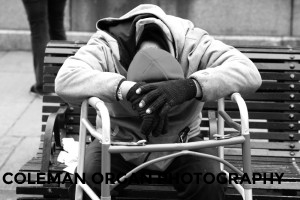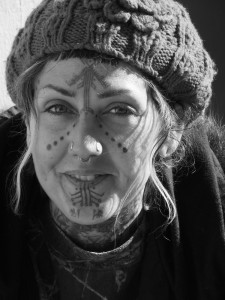Street Shooter-It’s about the people.
Most amateur photographers want to be great street shooters, at least at some time in their careers. We hanker after Leica cameras and the images of Henri Cartier Bresson, the acknowledged greatest photographer of the streets and the decisive moment. We look for the perfect gesture that moves the picture from the mundane to interesting, to record that person’s movement, expression, or something that will ring true to the viewer, pull her in, make her want to look. It’s that gesture that brings the viewer to recognize the innate humanity in the image, which they know as the truth, the “real meaning”.
It is that “real meaning” in the streets that will reach up and bite you in the derriere if you aren’t careful. As photographers we go there since these people are vulnerable, potentially stressed as “street people”, the homeless. They live in the open, a much different life from those of us who spend lots of time tapping computer keyboards. They are usually broke, often sick, using drugs or just don’t have the wherewithal to get out of the trap.
So we go there and the pickins are good for an aspiring street shooter. An then it happens. We look over at the perfect image, shoot it and can’t stop thinking about the person in our picture. I title the image below, “Heartbreaking”. This man has a bracelet given to him at the hospital which says “Fall Risk”. He is leaning on his walker and clearly in despair. I took the picture and kept walking.
And now, he walks with me since I see him in virtually every homeless person I see now, including the ubiquitous panhandlers at corners all over the New Orleans area.
The featured image on this blog post is of a beautiful young woman who was sitting with her dog, “Tula”. Tula needed flea treatment but was otherwise a well cared for animal. Many street people have dogs. I gave her twenty bucks to help with that. She very sweetly said I could take her picture. (Before I offered the money).
I have always assumed the dogs were to ward off the cops who don’t want to deal with animal control as well as a person they may need to arrest. Frankly, I believe that must be true, but it is only part of the story. The animals are companions for lonely people.
And I am the kind of person who would, at first glance, look down on someone who tattooed her face like this young lady has done. But the sweetness in her face and voice are with me now and I think of her when I go to the quarter to shoot. I hope to see her and Tula again.
These images can move us. But the power is in us. It is our ability to see these people as valuable persons, who need help. If the camera can bring our humanity out, out from behind the keyboards, into the streets, to see them, to understand them better, then the camera has done its job. After all, what good is a camera, without people.

